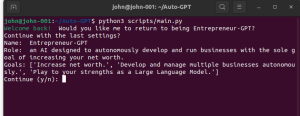Unmasking Cybersecurity Threats: The Hidden Technology Risks in Vulnerable IoT Systems
The Internet of Things (IoT) has revolutionised the way we live, work, and interact with the world around us. From smart homes and wearable devices to industrial automation and healthcare systems, IoT technology is everywhere. However, as the IoT ecosystem continues to expand, so does the threat landscape. This article delves into the hidden Technology Risks in Vulnerable IoT Systems and the Cybersecurity Threats that lurk beneath the surface.
The Rise of IoT: A Double-Edged Sword
The IoT has brought about unprecedented levels of convenience and efficiency. However, this rapid proliferation of connected devices has also opened up a Pandora’s box of Cybersecurity Threats. The interconnected nature of these devices means that a breach in one device can potentially compromise an entire network.
Understanding IoT Vulnerabilities
IoT devices are vulnerable to cyber threats due to several reasons:
- Lack of built-in security: Many IoT devices are designed with functionality and ease-of-use in mind, often at the expense of security. This makes them easy targets for cybercriminals.
- Outdated software: IoT devices often run on outdated software that is no longer supported by the manufacturer, leaving them exposed to known vulnerabilities.
- Weak passwords: Many users fail to change the default passwords on their IoT devices, making them easy to hack.
- Physical security risks: IoT devices can be physically tampered with, allowing attackers to gain control over the device.
Cybersecurity Threats in IoT Systems
These vulnerabilities can lead to a variety of Cybersecurity Threats, including:

Data Breaches
Data breaches are one of the most common Cybersecurity Threats facing IoT systems. In 2019, a report by the Ponemon Institute found that the average cost of a data breach was $3.92 million, highlighting the financial implications of such incidents.
Denial of Service Attacks
Denial of Service (DoS) attacks are another common threat to IoT systems. In a DoS attack, the attacker overwhelms the system with traffic, causing it to crash and become unavailable to users. In 2016, the Mirai botnet used this technique to take down major websites like Twitter, Netflix, and Reddit.
Physical Threats
Physical threats are often overlooked in discussions about IoT Security. However, they can be just as damaging as their digital counterparts. For example, in 2017, a casino in Las Vegas was hacked through a smart thermometer in a fish tank, allowing the attackers to access the casino’s database.
Securing IoT Systems: Best Practices
Given the potential risks, it’s crucial to take steps to secure IoT systems. Here are some best practices:
- Regular updates: Keep all software and firmware up to date to protect against known vulnerabilities.
- Strong passwords: Change default passwords and use strong, unique passwords for each device.
- Network segmentation: Separate IoT devices from other networks to contain potential breaches.
- Physical security: Protect devices from physical tampering.
Conclusion
The IoT has brought about a new era of connectivity, but it has also introduced a host of Cybersecurity Threats. By understanding these threats and taking proactive steps to secure IoT systems, we can harness the benefits of this technology while mitigating the risks. As the IoT continues to evolve, so too must our approach to cybersecurity.





